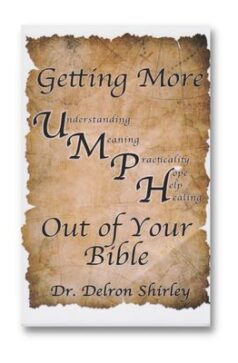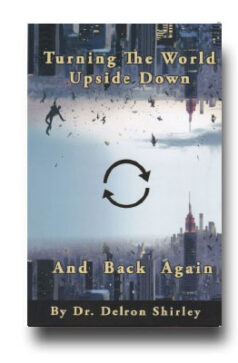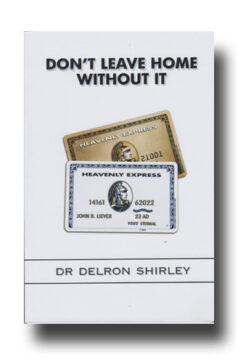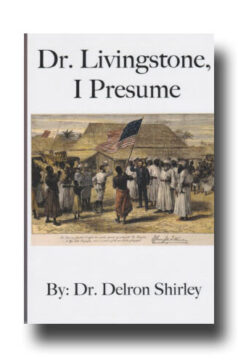In the only line I remember from the Christmas special of a long-forgotten sitcom, a Jewish lady who was trying to adjust to the Christian-dominated society made a statement about something which had to do with one of our holiday customs. Because Hanukah — the Jewish holiday which roughly coincided with our Christmas — is often spelled with a silent “C” at the front, she pronounced “Christmas” as if its initial “C” were also silent. When corrected, she replied, “‘Hanukah,’ ‘Hristmas,’ what’s the difference?” The question inspires my question, “Who put the ‘C’ in ‘Christmas,’ anyway?”
The “C” in “Christmas” stands for curiosity — the standard ingredient which has tormented each of us from the first time we eagerly waited to see what would magically appear under the tree to this very year when we still trying to guess what is in that one special package in its bright wrapping paper. Curiosity is the quality of Christmas which is so aptly described in the line of the popular song, “Every mother’s child will find it hard to sleep tonight wondering if reindeer really know how to fly.”
But where did curiosity come from? It was part of the very first Christmas when the shepherds suggested to one another, “Let’s go see this thing that the angels are talking about.” It was curiosity that led them to Bethlehem and to the baby Jesus! The shepherds put the “C” in “Christmas.”
Well, if the “C” came from the shepherds, who put the “H” in “Christmas?” “H” is the element of hope which makes Christmas different from any of the other three hundred sixty-four days of the year. Christmas always seems to bring with it a new level of hope and expectation. We hope — and really believe — that we will hear from that long-lost friend or relative. We hope — and actually dare to expect — that there will be new relationships with those who have been distanced. We all have our Christmas wishes which we imagine will become reality — no matter what the odds.
But where did hope come from? Hope became part of the story of the first Christmas when Simeon and Anna blessed the baby in the temple. The elderly twosome had served in the temple for years in the hope of seeing the Lord’s messiah. Now, in the twilight years of their lives, the dreams and prayers which had been the burden of their hearts for decades were fulfilled before their age-dimmed eyes! To them, the whole message of Jesus’ birth was a loud proclamation of hope! Anna and Simeon put the “H” in “Christmas.”
Now, if it was Anna and Simeon who gave the “H,” who provided the “R”? “R” stands for rejoicing — the hallmark of the holiday. As if the whole world has been injected with “Joy to the World” to the point that the “city streetlights, even stoplights, flash a bright red and green,” joy indelibly marks the season. From the music in the shopping mall to the carols of the church choirs to individuals whistling a tune as they go about their holiday chores to the general feeling which pervades the atmosphere — rejoicing is the very thumbprint of the season.
But where did rejoicing come from? Rejoicing was birthed into the Nativity story when an angelic choir put on a private concert for a little band of shepherds on the Bethlehem hillside to announce tidings of great joy. It was the heavenly host who put the “R” in “Christmas.”
Well, if we got the “R” from the celestial chorus, where did we get the “I”? The “I” stands for insight — a quality of Christmas which may not be discussed as often as it is experienced. Although we seldom use the word, we could each testify to having had at least a little visit by the Ghost of Christmases Past, the Ghost of Christmas Present, and the Ghost of Christmases Yet to Come. Just like Ebenezer Scrooge, we can all point to something in the holiday season which has helped us to see our world from a new perspective.
But who introduced insight into the Christmas story? This job fell into the hands of the angel Gabriel who was sent from his comfortable heavenly quarters to the dusty little town of Nazareth to give a little virgin girl a new insight into God’s overall plan for man: He was interested in man’s needs and his condition, He could make a girl pregnant without her having human relationships, and He would use a little baby to save the human race. Next, Gabriel had to visit her boyfriend and give him a totally new insight into the scheme of things: God wanted him to bear the humility of a questionable marriage and share the dignity of raising the very Son of God. The angel Gabriel made insight a part of Christmas.
If it was from Gabriel that we got our “I,” where did we get the “S”? The “S” stands for spirit — the most obvious component of the holiday. In fact, the expression, “the Christmas spirit,” enjoys universal usage. Even those who may not believe in God, accept the story of the virgin birth, or believe that the manger held the Incarnate Word of God willingly recognize that there is more than just merchandise and emotion involved. Even though they may call it the “magic of the season,” they must admit that Christmas has its own unique synergy in which the holiday is far greater than the sum of its components of gift wrap, sleighs, men in red suits, and wooden camel cut-outs standing next to the manger scene on the front lawn of the church.
But how did the spirit become part of that first Christmas day? When the pregnant virgin visited her elderly cousin who was also supernaturally with child, Elizabeth’s baby leapt inside her womb. The explanation was that the Holy Spirit had filled John the Baptist while still inside his mother’s belly. Simply being in the presence of Jesus even though He was still inside Mary’s womb was enough to activate a spiritual anointing upon the unborn prophet. Today, even though the real Jesus may be buried under a very thick façade of commercialism and myth, His presence — right through the camouflage of contemporary society — is enough to give a new sensation to the season. It was John the Baptist who brought the spirit to Christmas.
If it was John the Baptist who put the “S” in “Christmas,” who was it who added the “T”? The “T” represents the treasures — the stuff that the “shoppers rush home with” in that favorite seasonal song. The very theme of the holiday seems to be, “Gifts and presents for everyone,” as we frantically count the shopping days until the Christmas deadline. The giving of gifts and exchanging of presents are such an integral part of the holiday that everyone in the retail business knows that he can always redeem himself from eleven months of poor performance with the sales of the one month leading up to Christmas.
We really don’t have to ask how treasures became part of the original Christmas because we all instantly remember that the wise men trekked hundreds of miles for the privilege of presenting their treasures before the One who was born king of the Jews. It was the wise men who added the treasures to our holiday.
So, if it was the wise men who put the “T” in “Christmas,” where did we get the “M”? The “M” represents memories — a part of the holiday which no one could overlook. In fact, there is probably no other emotion which is more profound at this season than the power of memory, and there is probably no other season of the year which is more ripe with memories. We all have a full bank of memories associated with the holiday: memories of those magical mornings when, as children, we found those special surprises under the tree; reminiscences of Christmases past with those loved ones who are separated from us this present Christmas or who are no longer here to share any future Christmases; remembrances of Christmas milestones such as the first Christmas of your married life, the first Christmas in a new home or new city, baby’s first Christmas, the first Christmas when the kids came back home after moving out of the house, and the first Christmas you had to share some of your family members with their spouses’ families. Certainly, memory is part of the very fabric of Christmas.
But who introduced memory into the original Christmas recipe? It was the Mary who took all the events of that first Christmas and “pondered them in her heart” — creating a store of memories for Christmases yet to come. It was the virgin Mary who gave us the “M.”
If the virgin Mary brought us an “M” for Christmas, we must ask where did we get the “A”? This letter brings us to a part of Christmas which we would all love to skip; but without it, our word would not be complete. “A” stands for animosity — the hard feelings which have been simmering against a sibling, another family member, an old girlfriend or boyfriend, or an ex-spouse. Unfortunately, it is all too often the case that it is only at holiday get-togethers that these latten conflicts are given occasion to vent. The crowded malls with long check-out lines and not enough parking spaces are also great breeding grounds for sudden flashes of animosity. You must certainly be asking why we are taking time to focus on such a negative facet of the holiday when there are so many happy aspects we could consider. The short answer is that the antagonistic feelings of the letter “A” are just as real as the warm, fuzzy memories represented by the letter “M.”
But who brought animosity to that first Christmas morn? It was King Herod who showed up with a giant “A” in his heart and hand. When he tried to trick the wise men into leading him to the baby Jesus and when he decreed the Slaughter of the Innocents in his malicious attempt to destroy the Christ Child, King Herod infected our blessed holiday with the black plague of animosity. It was King Herod who put the “A” in Christmas.”
If King Herod put the “A” in Christmas, who finished out the word by adding the “S”? This final installment represents savior — the whole point of Christmas anyway.
Behold, the angel of the Lord appeared unto him in a dream, saying, “Joseph, thou son of David, fear not to take unto thee Mary thy wife: for that which is conceived in her is of the Holy Ghost. And she shall bring forth a son, and thou shalt call his name JESUS: for he shall save his people from their sins.” Now all this was done, that it might be fulfilled which was spoken of the Lord by the prophet, saying, “Behold, a virgin shall be with child, and shall bring forth a son, and they shall call his name Emmanuel, which being interpreted is, God with us.” Then Joseph being raised from sleep did as the angel of the Lord had bidden him, and took unto him his wife: And knew her not till she had brought forth her firstborn son: and he called his name JESUS. (Matthew 1:20-25)
And, lo, the angel of the Lord came upon them, and the glory of the Lord shone round about them: and they were sore afraid. And the angel said unto them, “Fear not: for, behold, I bring you good tidings of great joy, which shall be to all people. For unto you is born this day in the city of David a Saviour, which is Christ the Lord.” (Luke 2:9-11)
It was Jesus who put the salvation in Christmas!!!










